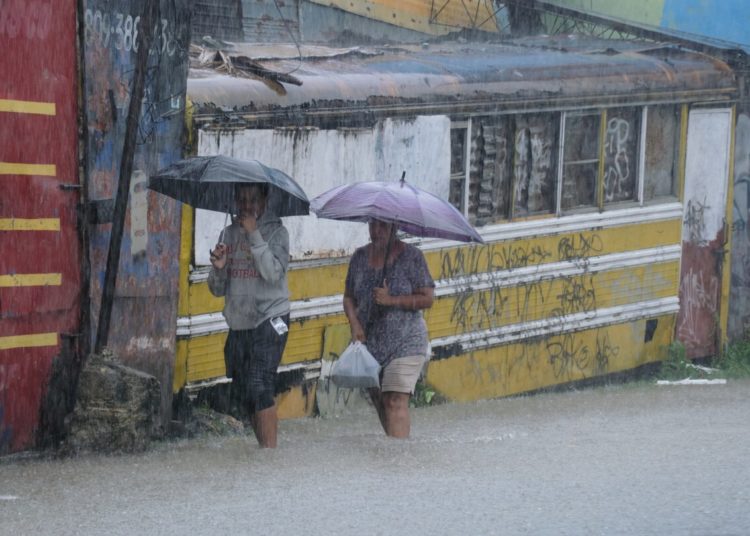An Air India plane carrying 242 people that crashed on takeoff from Ahmedabad in northwestern India on Thursday is the latest in a series of deadly plane crashes that shocked the world in recent months.
The latest plane crash killed all but one person onboard—a 40-year-old British national who managed to escape through an emergency exit.
The crash occurred as the Boeing 787-8 Dreamliner aircraft bound for London, the capital of the United Kingdom, attempted to lift off. Authorities confirmed that the lone survivor, Vishwash Kumar Ramesh, was seated in 11A and is now recovering in hospital after sustaining impact injuries.
Boeing President and CEO Kelly Ortberg said in statement on Wednesday: “Our deepest condolences go out to the loved ones of the passengers and crew on board Air India Flight 171, as well as everyone affected in Ahmedabad.”
Describing how he managed to jump from the plane’s emergency exit and walk away from the wreckage, Ramesh said: “It all happened so quickly.”
Such a scenario, with a sole survivor, is extremely rare in aviation history. How can this be even possible?
How Rare Is It for There To Be One Survivor in a Plane Crash?
While some plane accidents are survivable, the likelihood of having a single survivor is extremely low.
Professor Graham Braithwaite FRAeS, the director of aerospace and aviation at Cranfield University in the U.K., told Newsweek: “There have been cases in the past of one or a very small number of survivors in very serious accidents,” but it is “very rare” for there to be only one.
Braithwaite explained that this is “partly because aircraft accidents are very rare and partly because the majority of aircraft accidents are survivable.”
He added that “it is impossible” to calculate the odds of there being only a sole survivor, as it depends on “which aircraft types you include and whether you include non-fatal accidents and incidents.”
A July 2023 study published in the European Chemical Bulletin noted that air travel remains one of the safest forms of transportation, with a survival rate of 90 percent and continued improvements. The study cited pilot mistakes, crew communication problems, and coordination issues among the key factors in fatal crashes.
The U.S. National Transportation Safety Board (NTSB) stresses that the key to reducing fatalities is two-fold: “Preventing accidents and protecting occupants involved in accidents.”
According to an updated NTSB report on U.S. airline operations under Part 121 of the Title 14 Code of Federal Regulations (CFR), which covers large aircraft operated by airlines and cargo carriers, “between 1983 and 2000, about 95 percent of aircraft occupants involved in accidents survived,” the NTSB said. In serious crashes—those involving a pre- or post-crash fire, a serious injury or fatality, or a substantially damaged or destroyed aircraft—more than half survived.
Among the 35 serious U.S. crashes from 1983 to 2017 that met the aforementioned criteria for serious crashes, 28.6 percent saw all occupants survive, while 25.7 percent resulted in no survivors, the NTSB said. Even in these severe cases, 59 percent of occupants survived. For those fatally injured, the most common cause of death was impact forces.
Seat 11A—Did the Passenger’s Seat Help His Survival?
Ramesh’s seat assignment, 11A, raises questions about whether his location may have aided his survival.
Braithwaite cautioned that such speculation is difficult without full evidence. “Without evidence from the accident site, then this would be pure conjecture. Even when investigators examine the scene, they may not be able to answer that question as it will have changed as a result of the fire and rescue efforts,” he said.
The professor noted that the sole survivor of the Air India crash escaped through a damaged section of the fuselage, crawling onto a building. According to Braithwaite, this relative position in relation to the wreckage may have been a key factor. He said: “It could even be that the thing that made all the difference was where it was relative to the wrecked building.”
Ultimately, he said: “While the design of the aircraft may have helped including the seatbelt, it may have been pure chance that dictated why it was him and not someone else.”
Do Some Plane Seats Have a Higher Chance of Surviving a Crash?
When it comes to whether certain seats are inherently safer, the answer is complex. “It’s such a hard question to answer,” Braithwaite said.
He added: “While it is of no consolation to those affected by the tragic accident which has occurred yesterday, the simple answer is that all seats on modern jet aircraft are incredibly safe. The accident record proves that, especially compared to other modes of transport like driving.”
Braithwaite explained that safety is built into many aspects of aviation. The professor noted that “many things go into designing aircraft, airspace, airports, procedures and training.”
International standards and recommended practices shared by the International Civil Aviation Organization, the International Air Transport Association and other groups have “helped to reduce the likelihood of an aircraft being involved in an accident and also increase the likelihood of survival,” he added.
Seat design and materials also play a crucial role. “The design of the seat and even the fixtures around them must meet strict crashworthiness standards as well as flammability standards,” he said. Additionally, regulations govern “the space around exits and the distance between a seat and an exit.”
Braithwaite also pointed out the human factor in survivability. “We shouldn’t forget the role of the cabin crew too—essential in an emergency where we know their commands can make all the difference,” he said.
Do you have a travel-related story to share? Let us know via [email protected] and your story could be featured on Newsweek.
The post Seat 11A and How Just One Man Could Survive Air India Plane Crash—by Expert appeared first on Newsweek.




